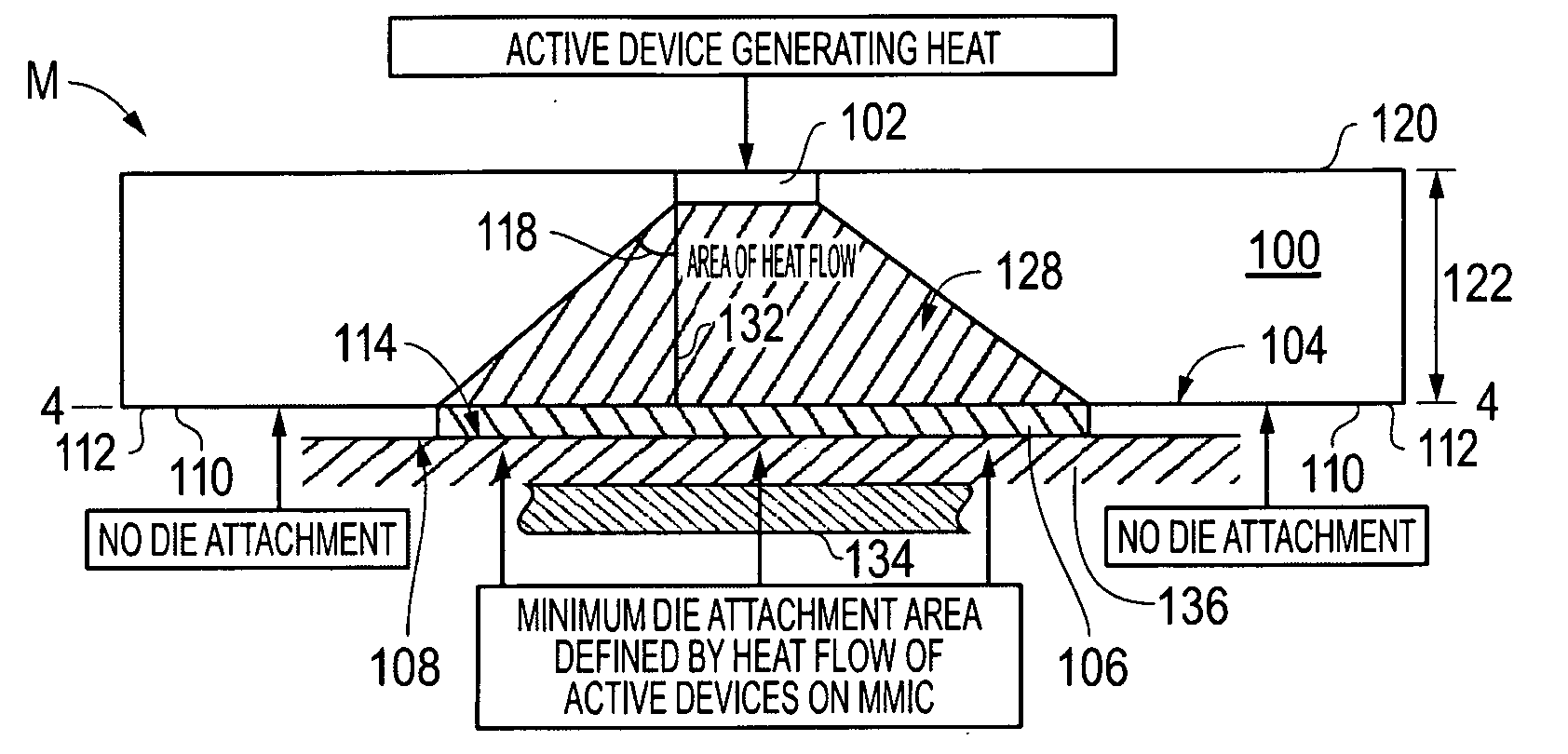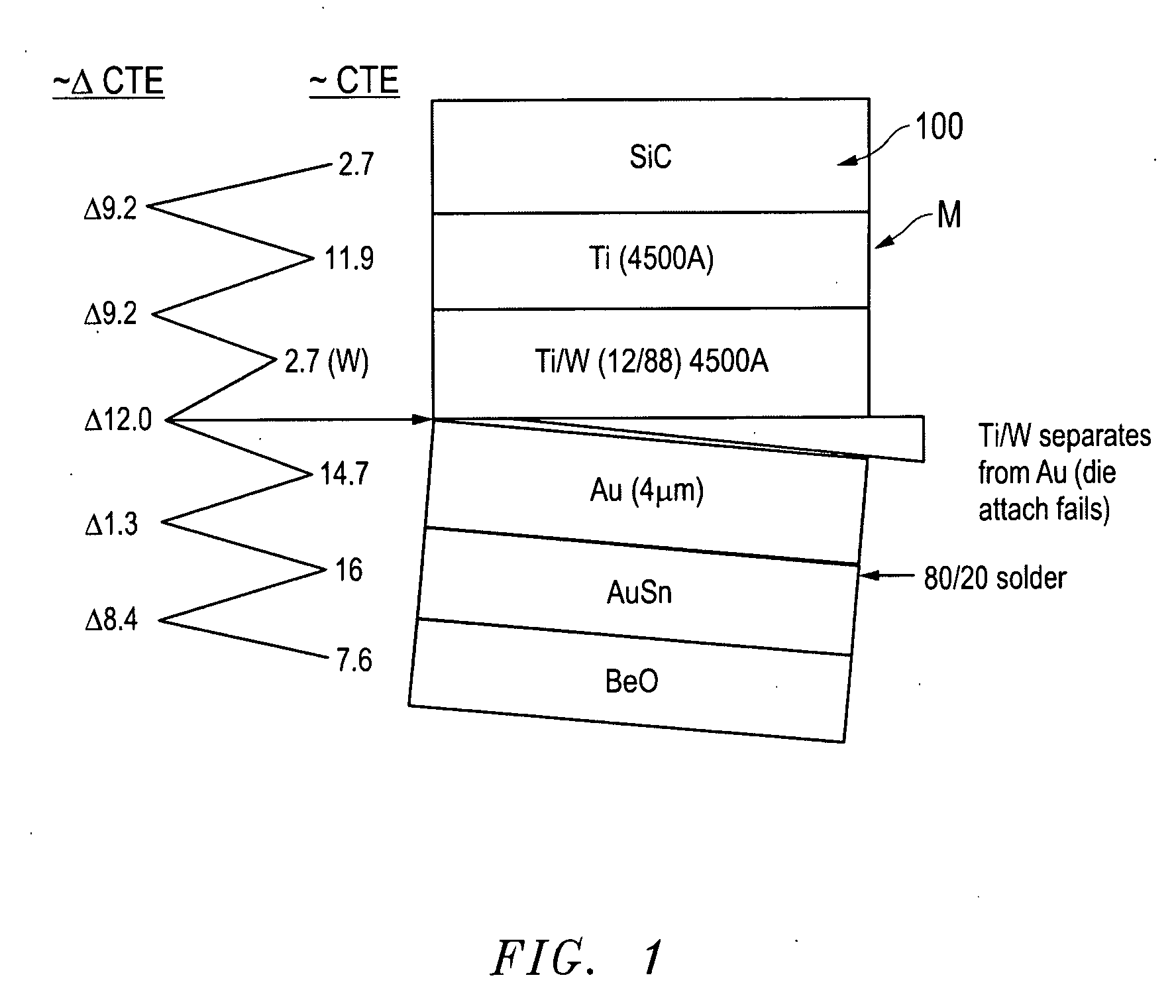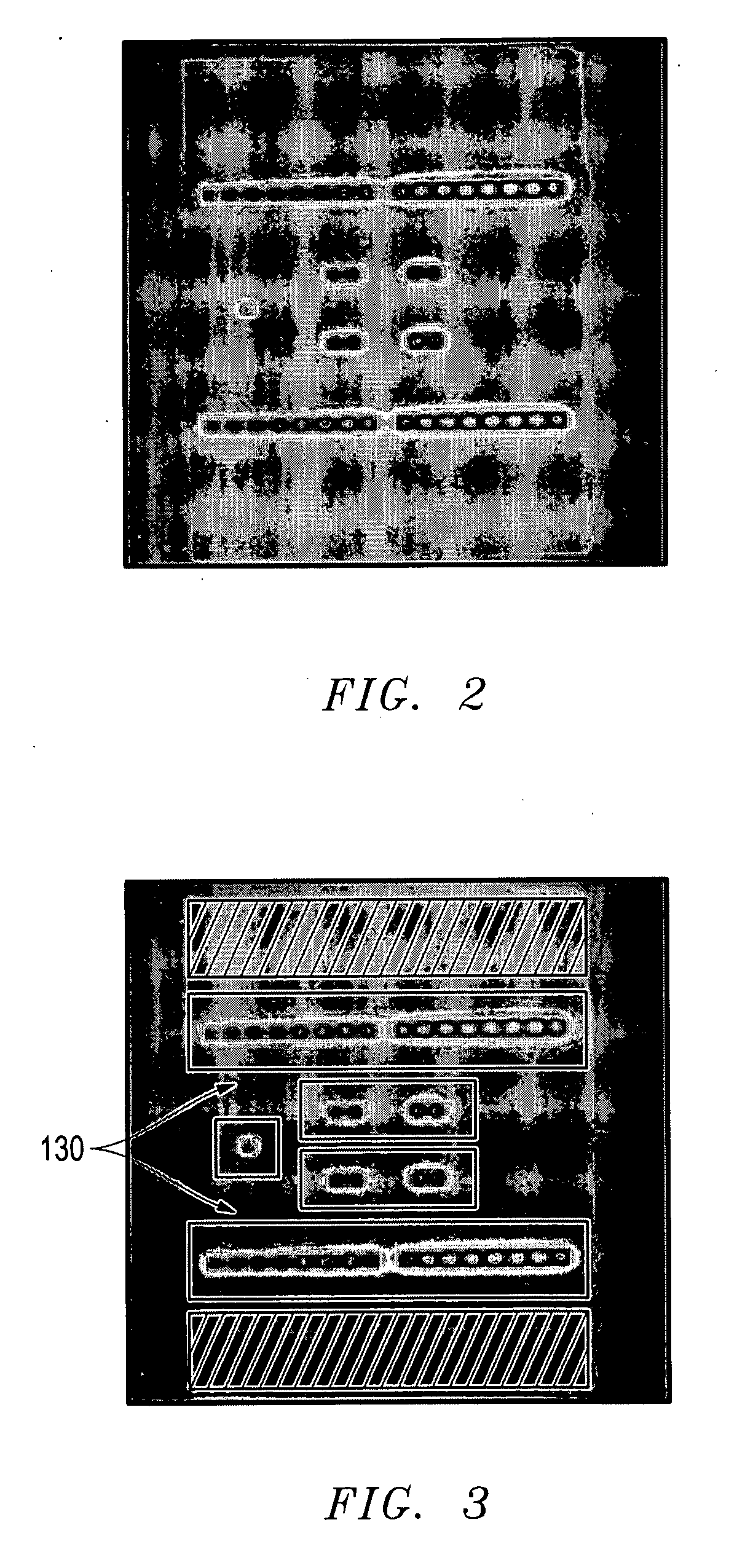Reliability improvement in a compound semiconductor mmic
- Summary
- Abstract
- Description
- Claims
- Application Information
AI Technical Summary
Benefits of technology
Problems solved by technology
Method used
Image
Examples
Embodiment Construction
[0032]So that the manner in which the above recited features, advantages and objects of the present invention are attained can be understood in detail, more particular description of the invention, briefly summarized above, may be had by reference to the embodiment thereof that is illustrated in the appended drawings. In all the drawings, identical numbers represent the same elements.
[0033]A semiconductor package M includes a semiconductor substrate layer 100 having a first side or upper surface 120 and a second side or lower surface or backplane 104 opposite the first side 120. A heat producing or active area 102 is formed associated with the first side 120 of the semiconductor substrate layer 100. A die attachment member 106 is formed in contact with the second side 104 of the semiconductor substrate layer 100 and extends over less than all of the second side 104 of the semiconductor substrate layer 100. The die attachment material 106 is essentially uniformly disposed opposite of...
PUM
 Login to View More
Login to View More Abstract
Description
Claims
Application Information
 Login to View More
Login to View More - R&D
- Intellectual Property
- Life Sciences
- Materials
- Tech Scout
- Unparalleled Data Quality
- Higher Quality Content
- 60% Fewer Hallucinations
Browse by: Latest US Patents, China's latest patents, Technical Efficacy Thesaurus, Application Domain, Technology Topic, Popular Technical Reports.
© 2025 PatSnap. All rights reserved.Legal|Privacy policy|Modern Slavery Act Transparency Statement|Sitemap|About US| Contact US: help@patsnap.com



